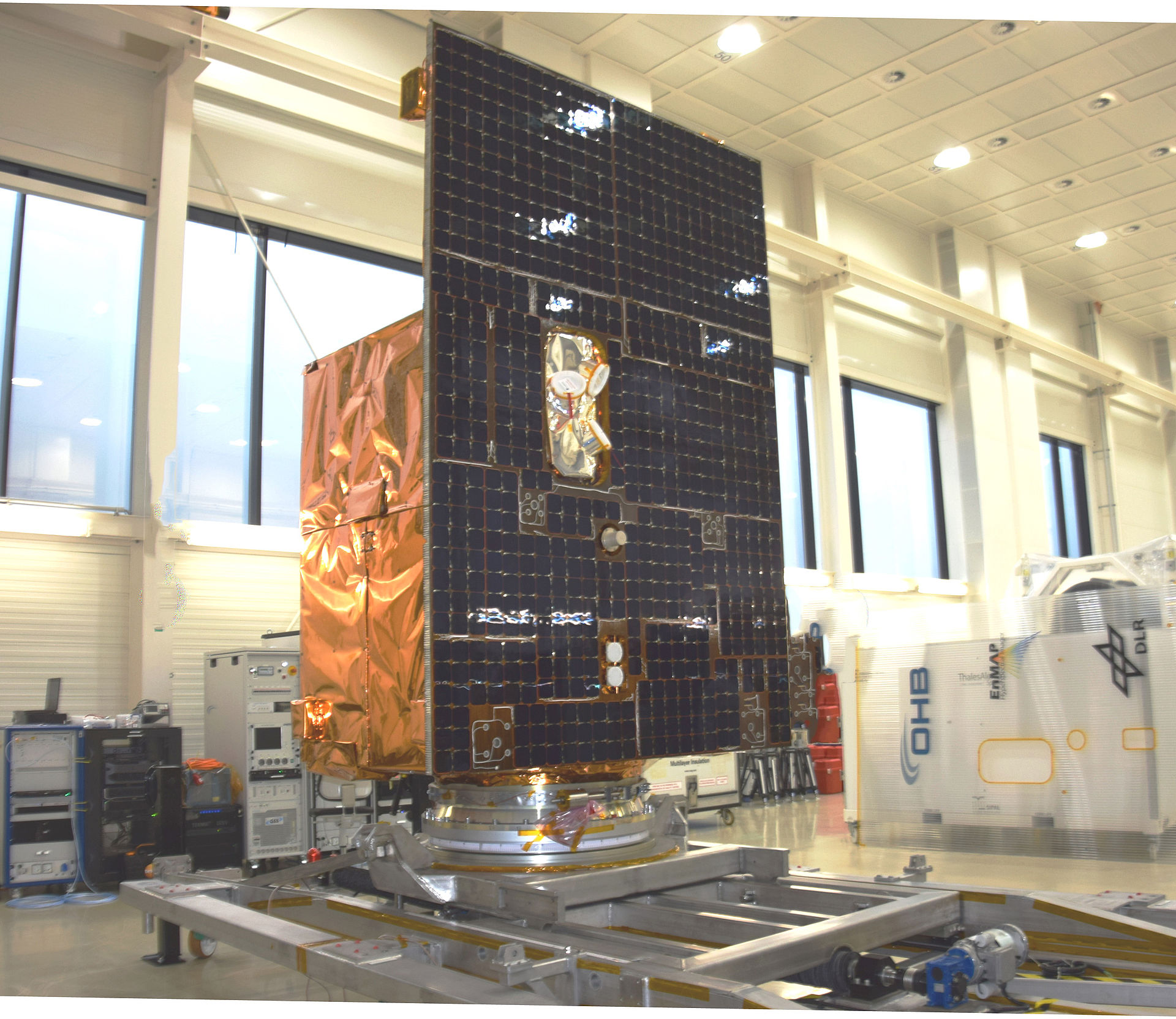
Oberpfaffenhofen, December 17, 2021. The EnMAP (Environmental Mapping and Analysis Program) hyperspectral satellite has now reached its next milestone, having successfully completed environmental testing at the IABG test center in Ottobrunn, Bavaria. Further functional testing at the OHB headquarters in Bremen, where the satellite is now being prepared for shipment to the launch site, has confirmed the full operating capabilities of the satellite. This means that the satellite is now ready for its journey into space! EnMAP is to provide new types of data on the state of and changes to the ecosystem on the earth’s surface. The “environmental observer” is to lift off on board a SpaceX Falcon 9 launcher in April 2022 and will be placed in a solar-synchronous orbit around the earth at an altitude of around 650 kilometers. The satellite is being developed and built by OHB System AG on behalf of the German Space Agency at DLR with funding provided by the German Federal Ministry for Economic Affairs and Climate Protection (BMWi).
Analytical laboratory in space
“EnMAP marks the commencement of a completely new era in earth observation. I am pleased and proud that we have managed to complete this ambitious project together with our partner DLR,” says Marco Fuchs, CEO of OHB System AG. “Hyperspectral data will generate a wealth of new earth observation data, which is of immense importance for the crucial climate protection agenda and achievement of the sustainability goals. This is why the European Copernicus mission CHIME, which also includes an OHB hyperspectral payload, is being awaited so eagerly by European scientists.”
Testing under space-like conditions
Before being able to perform its services in space, the satellite, which is truly a technology miracle, spent many months in the test chamber during the summer. EnMAP underwent rigorous testing over several months at the IABG Space Test Center, completing extensive environmental testing. This included a thermal vacuum test, in which the satellite had to prove itself in a hot as well as an icy-cold environment, as well as a series of intensive mechanical tests, followed by EMC (electromagnetic compatibility) and autocompatibility testing. The purpose was to demonstrate that EnMAP is able to withstand the rigors of a rocket launch and the extreme conditions in orbit in view of the fact that the satellite is shaken vigorously and exposed to extreme noise during the launch phase.
How does EnMAP work?
Engineered at the OHB “Optics and Science” space center in Oberpfaffenhofen, the EnMAP instrument will be analyzing from space the solar radiation reflected off the earth’s surface. It will record this data in a range from visible light to the short-wave infrared segment as well as in continuous spectra. The spectrally high-resolution images created by EnMAP will provide answers to questions such as: How polluted is the water? What minerals or pollutants are in the soil? What is growing there and what is the situation with regard to the availability of plant nutrients? What impact is climate change having on a wide variety of different ecosystems? “Although EnMAP is primarily a scientific mission, there is clear potential for developing operational applications, such as for agriculture or environmental protection. EnMAP will be providing us with unique data for this,” says Hans-Peter Honold, senior project manager for EnMAP at OHB.
EnMAP – the German environmental mission and its partners
The EnMAP environmental mission is being lead-managed by the German Space Agency at the German Aerospace Center (DLR) in Bonn on behalf of the German Federal Ministry of Economics and Climate Protection (BMWi) as part of the national space program. OHB-System AG was awarded the contract for developing and engineering the satellite and the hyperspectral instrument. The mission is under the scientific direction of GeoForschungszentrum Potsdam (GFZ). Three DLR institutes and facilities have been commissioned with the construction and operation of the ground segment: the German Space Operations Center in Oberpfaffenhofen will be carrying out and monitoring satellite operations, while the German Remote Sensing Data Center and the DLR Remote Sensing Technology Institute will be responsible for archiving, processing and validating the satellite data and making it available for scientific research. Companies and government agencies will also be working with the new data and readying future services. The future use of EnMAP hyperspectral data by universities and scientific institutions and the development of special applications will be supported by funding programs initiated by the Federal Ministry of Economics and Climate Protection (BMWi).
Contact for media representatives:
Marianne Radel
Head of Corporate Communications
Phone: +49 421 2020 9159
Email: marianne.radel@ohb.de
Contact for investors and analysts:
Marcel Dietz
Investor Relations
Phone: +49 421 2020 6426
Email: ir@ohb.de
